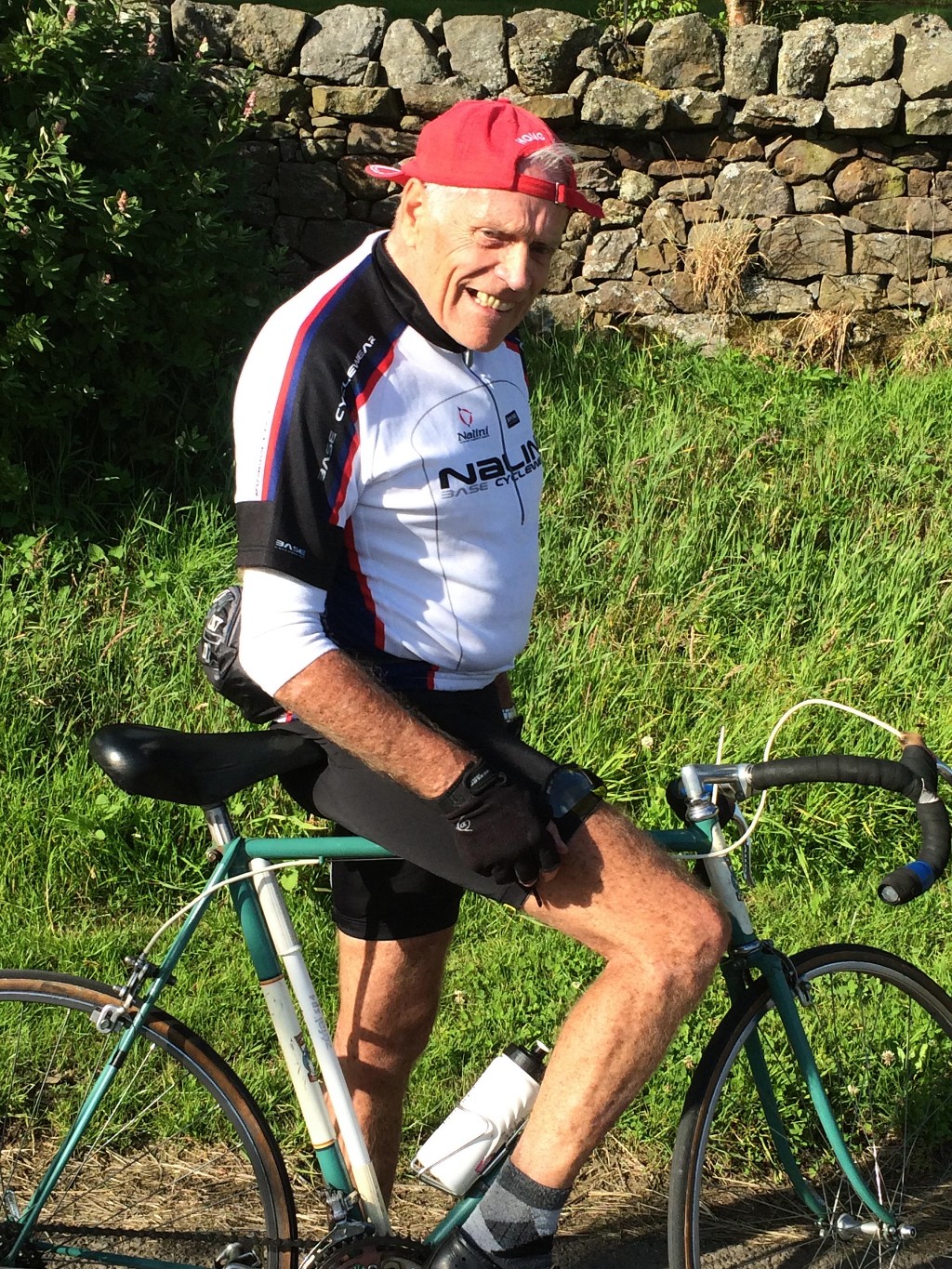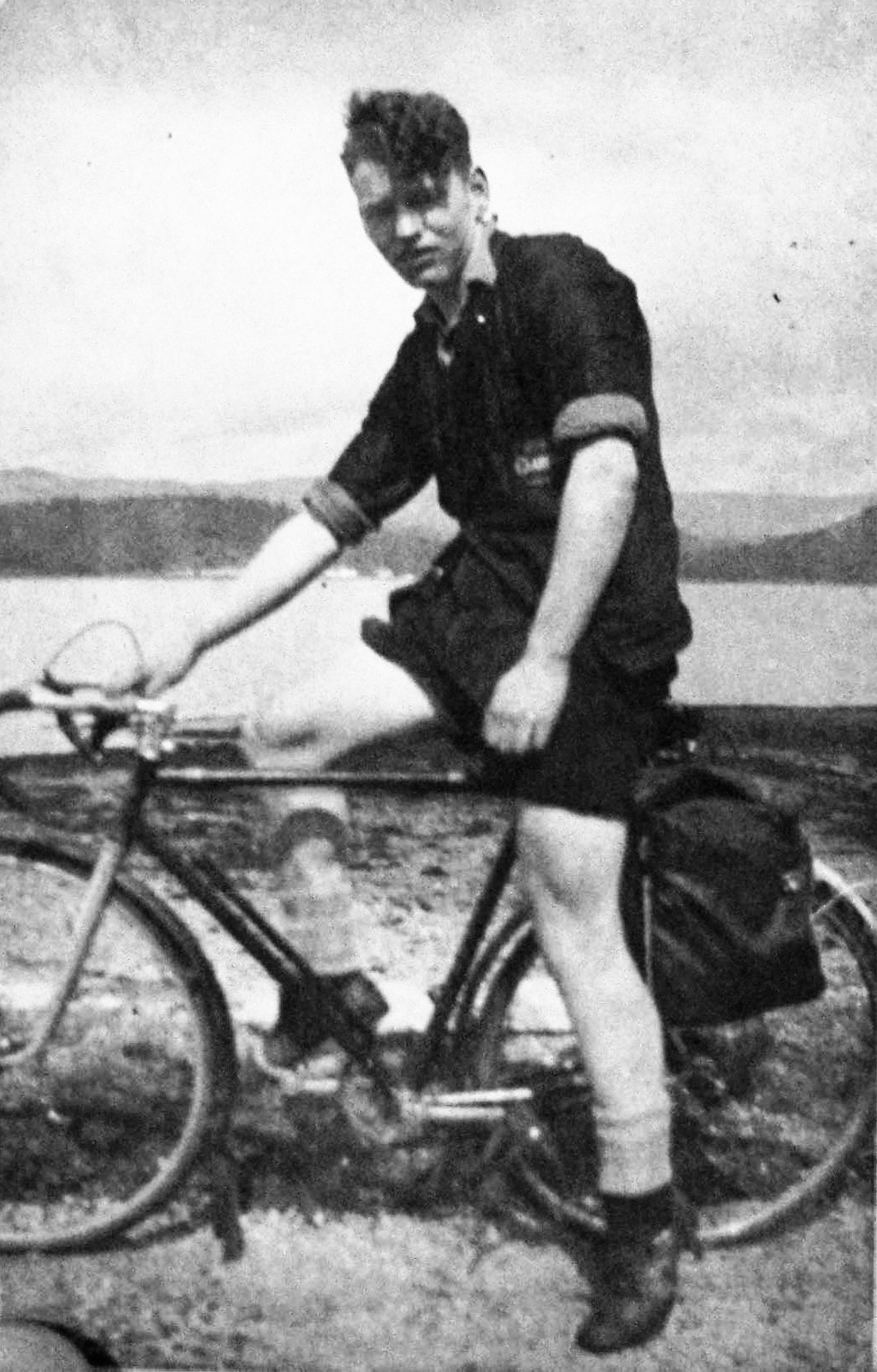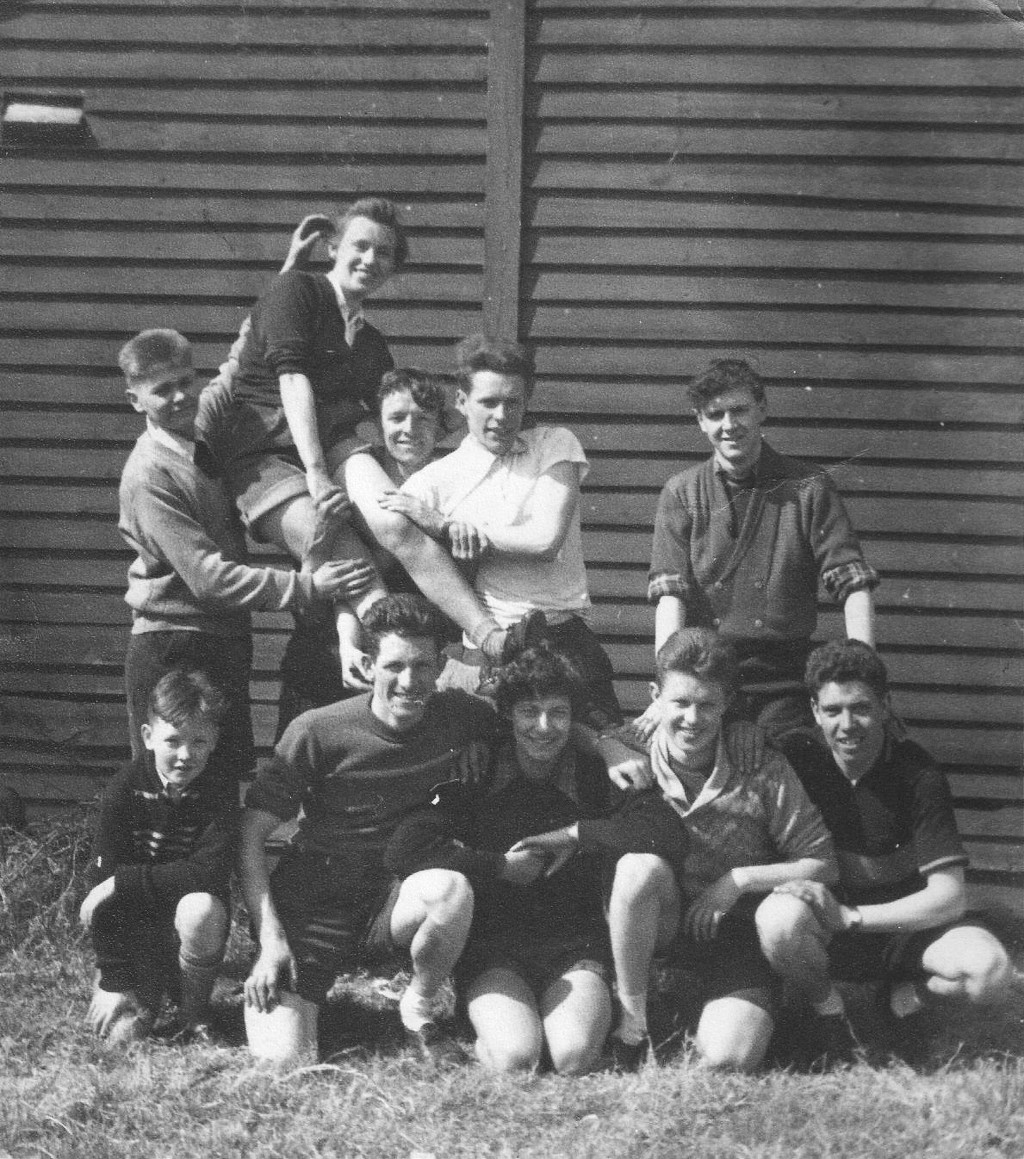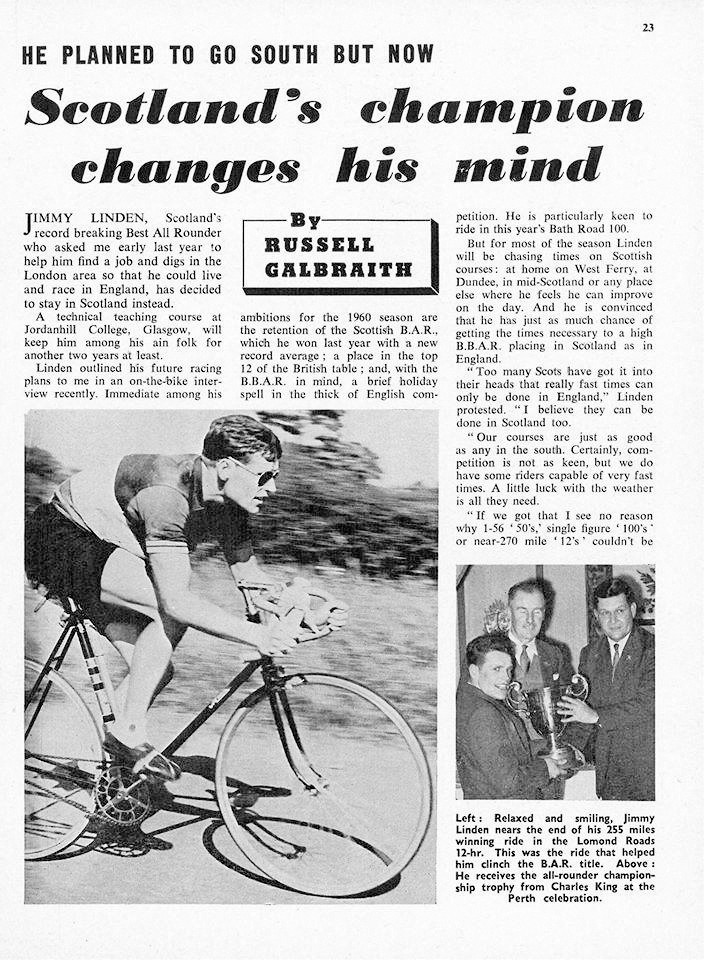In the ‘whatever happened to?’ file: Mr. Jim Linden, former four times Scottish BAR; six times Scottish individual time trial champion and three times Scottish record breaker. The good news is that we can report that he’s alive and well and living in Hong Kong where, at 84 years-of-age he’s still working as a consultant.
Linden first won the Scottish BAR for the first time in 1959 defending the title in 1960 and 1961. His was no ‘overnight’ success, he was sixth at 21 years-of-age in 1956, seventh in 1957 and third in 1958 before his 1959 victory.
He was second in 1962 to a stunning BAR debut performance from roadman Gordon McNaught, who in his first attempt at all of the three distances recorded 1:58:50 for a ‘50’ – 4:10:36 for a ‘100’ and 267 miles for a ’12’ winning with the title with just three rides.
That was to be Linden’s last tilt at the title for a decade.
In 1971, stung by jibes ‘from someone my wife and I didn’t like,’ he returned to win the 1972 BAR with rides of: 2:0:24 – 4:13:22 and 260.5 miles.
In 1973 he was third to a rampant Drew Brunton who averaged a record 23.888 mph to win the title from Andy Kirk.
With regard to individual championships, Linden was ‘100’ champion in ’58, ’61 and ’72 – and ‘12’ champion in ’58, ’60 and ’73.
We thought we’d open our chat with the man by taking a trip through his three Scottish records.

Thank you for taking the time to speak to us, Jim – can we open by taking a wander through your record breaking activities: ’50’ – ‘100’ and ’12’?
“The ‘50’ was a 1:59:17 in 1959 at Perth but should have been faster because I crashed during that ride.
“‘Pinky’ Williams had warned me before the start that there was some sort of monument near Errol and cars driving out of the field where they parked to go and see this thing brought a lot of mud out on to the road with them and the surface became dangerously slippery.
“I was just recalling Pinky’s words as I approached Errol and before I knew it the bike had gone from under me.
“The ‘100’ was 4:09:29 in 1961 at Stirling; my brother was looking after me that day and I remember saying to him before the start; “this is the day” my first 25 miles were done somewhere around 57 minutes and I rode through the field to finish first.
“The ‘12’ was 264.77 miles on Westferry on 1960 on my usual 81” fixed; that stood for 20 years.“
McNaught taking the BAR in ’62 must have come as a bit of a surprise?
“I was late getting my entry in for the ‘100’ so missed a good day there but I calculated that if I could do 276 miles in the Fife ‘12’ I could take the BAR again.
“At six hours I ridden 140 miles and was confident of achieving my goal but the wind rose late in the day and if it’s a head wind on the drag from Dunshalt up to Falkland then around to Newton it becomes a very tough finishing circuit indeed.
“I did 261 miles which was a course record by five or six miles but not enough to defend the BAR.”

Going back to the beginning, you came from a cycling family so it was almost inevitable you’d get into the sport?
“It was very easy for me to get involved in cycling.
“I had three older brothers involved in cycling, John, Tom and Alex, and two older sisters who liked the outdoor life.
“John was in the Dalmarnock Clarion, Tom the Glasgow Nightingale and Alex was a member of the legendary ‘Balloch Wachles’ group who would go out on the bike in the snow wearing shorts – but later the group joined the Lomond Roads.
“I was the youngest by ten years to my sister Cecilia and Mary the oldest by twenty, so you get the spectrum of my family.”

I was intrigued by the tale of your sleeping in a field before a ‘25’ in your early days.
“It was the ‘horseshoe’ course which went through the Raploch at Stirling where a nice widow woman used to let cyclists who were racing in the morning stay for a fee of eight shillings.
“I cycled out to her house but it was full, no vacancies, so I cycled out to the start and found a big oak tree in a field and lit a fire, I just had my shorts and cape with my racing stuff in my bag.
“I always carried food with me so I had something to eat and bedded down for the night beside the fire and tried to sleep.
“I was awakened by voices, it was the time keepers getting ready for the event, I made a can of tea on the fire then wandered over and asked if they’d like some?
“There were many good riders in the field and I was in the 70’s unseeded and had a 76” fixed gear.
“The winner was Albert [Pud] Patton, Hamilton CC with a ‘59’ and I came in second with 1:02:55, third was Freddie Davy, West of Scotland Clarion with a 1:03.”

I read that you used to train three times each day when you were young?
“When I worked at the Singers Sewing Machine 29 department tool room I’d do 11 miles each way to work and perhaps extend that a bit at night, even in the snow but I had a tendency to fall off !
“Later, when I worked at the North British Locomotive Company I was only a couple of miles from where we lived so I would get up early and train, come home, have a wash and a bite to eat before I cycled to work, then go out at night.
“But as time went on I realised that speed was what it was all about and changed my methods.
“In my book here are four ‘S’ words when it comes to training Speed, Stamina, Strength, Skill.”

You’ve stressed the importance of having a mentor/confidant behind you?
“I used to quip that; ‘all good cyclists should have a good butcher behind them.’
“My mentor was Bert Hamilton, he was a butcher and used to drive me all over the country to races in his van.
“When Billy Bilsland was a youngster on the way up I gave him that advice that he should have someone behind him who he could trust to mentor him.”

In those days you were a fixed wheel man.
“One evening coming home from work with a friend, Joe Bilsland we didn’t notice a road repair in Great Western Road; it was just one hole with a large triangle wooden protector but no light, Joe missed it and I smacked into it, the forks bent, the top tube wrinkled and I came off.
“I had had the frame insured and it was only two months old so I took it back to the shop and bought a Mercian track frame with the insurance.
“No more road bikes.”
In Part Two we’ll cover Jim’s 70’s comeback.



